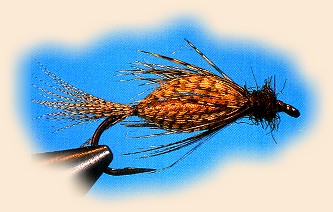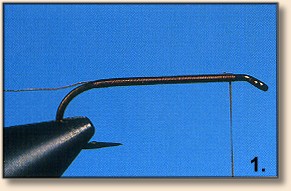
1. Place the hook in the vise and apply a thread
base that covers most of the hook shank. Be sure
to leave a long tag of tying thread at the back of
the shank for use in a future step; store it in the
material keeper for now. Also leave enough room
at the front of the fly to later form a head.
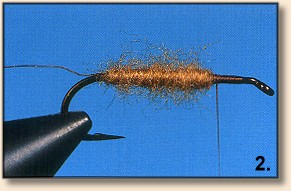
2. Apply tan Antron dubbing to the thread and wrap
a body that covers the back 2/3 of the hook shank.
Leave the tying thread hanging at the 1/3 point on
the shank at the front of the body.
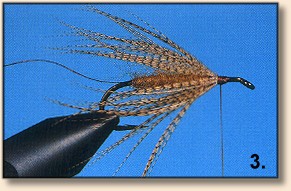
3. Select a Woodduck feather with fibers long
enough to form the bubble and the tail in the
next step. Tie it on the hook by its tip at the
front of the body and wrap a wet-style collar.
Tie off the feather and trim away the waste end.
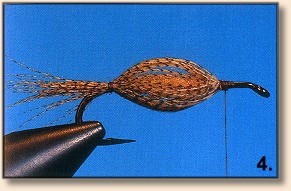
4. Retrieve the tag of thread remaining from
Step 1. Pull the woodduck fibers back over the
body forming a bubble and anchor them with the
thread at the end of the shank. The remaining
ends form the fly's tail. Whip finish the thread
and trim it from the hook. Place a drop of
head cement on the whip finish.
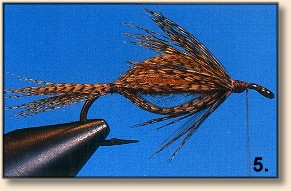
5. Select a partridge feather and sweep the fibers
back along the stem. Tie in on the hook by its tip
and wrap a two-turn wet-style collor. Trim off the
waste end.
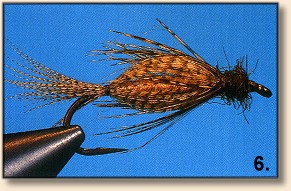
6. Form a head of brown dubbing. Whip finish the
thread, cut it from the hook, and apply a coating
of head cement. ~ Al and Gretchen, ID

